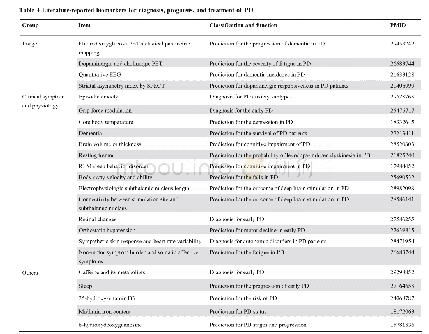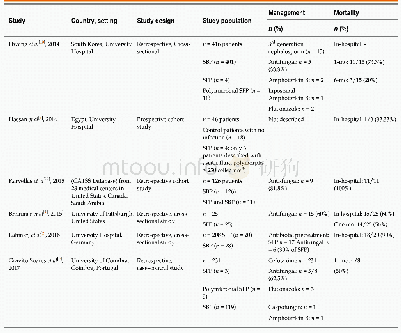《Table 2 Treatment and prognosis of allergic fungal rhinosinusitis accompanied by allergic bronchopu
 提示:宽带有限、当前游客访问压缩模式
提示:宽带有限、当前游客访问压缩模式
本系列图表出处文件名:随高清版一同展现
《Allergic fungal rhinosinusitis accompanied by allergic bronchopulmonary aspergillosis: A case report and literature review》
Fungi are almost ubiquitous and can be found in the nasal cavity and sinuses of healthy people.However,fungal infections of the airway are uncommon and may occur both in immunocompromised and immunocompetent individuals[12].Fungal rhinosinusitis is the main type of fungal infection and inflammation of the upper airway,and can be divided into non-invasive and invasive forms[13].The non-invasive types include localized fungal colonization,fungal ball,and AFRS[14].AFRS is usually caused by Aspergillus spp.,which is termed allergic aspergillus sinusitis.Fungal infections and inflammation of the lower airway are also mainly caused by Aspergillus spp.,including ABPA,aspergilloma,chronic necrotizing pneumonia,and invasive pulmonary aspergillosis[15].Other funguses can also lead to diseases such as ABPA,which is termed allergic bronchopulmonary mycosis(ABPM)[16].ABPA belongs to ABPM.Recently,the morbidity of this allergic disease has increased perceptibly,in line with the increased prevalence of AFRS and ABPA.However,coexistence of AFRS and ABPA is still uncommon.Some authors have defined this type of disease as sinobronchial allergic mycosis[17].We searched the PubMed database for reports of coexisting AFRS and ABPA for the period from 1970 to 2016(keywords:allergic fungal rhinosinusitis,allergic bronchopulmonary aspergillosis;or allergic aspergillus sinusitis,allergic bronchopulmonary aspergillosis)and found 20 patients in 13English articles(including the present case)that included clinical and imaging details(Tables 1 and 2)[18-28].Until now,only one article recorded a case of coexisting AFRS and ABPM that did not originate with Aspergillus spp.[29].Some articles mentioned the coexistence of AFRS and ABPA but did not include details(or the reports were written in other languages)[30-33].
| 图表编号 | XD004824500 严禁用于非法目的 |
|---|---|
| 绘制时间 | 2019.11.26 |
| 作者 | Ke-Jia Cheng、Min-Li Zhou、Yong-Cai Liu、Shui-Hong Zhou |
| 绘制单位 | Department of Otolaryngology, The First Affiliated Hospital, College of Medicine, Zhejiang University、Department of Otolaryngology, The First Affiliated Hospital, College of Medicine, Zhejiang University、Department of Otolaryngology, The First Affiliated |
| 更多格式 | 高清、无水印(增值服务) |
查看“Table 2 Treatment and prognosis of allergic fungal rhinosinusitis accompanied by allergic bronchopulmonary aspergillosis”的人还看了
-

- Table 2 The inhibition rates after three kinds of polyphenols treatment as detected by MTT assay under different treatme





